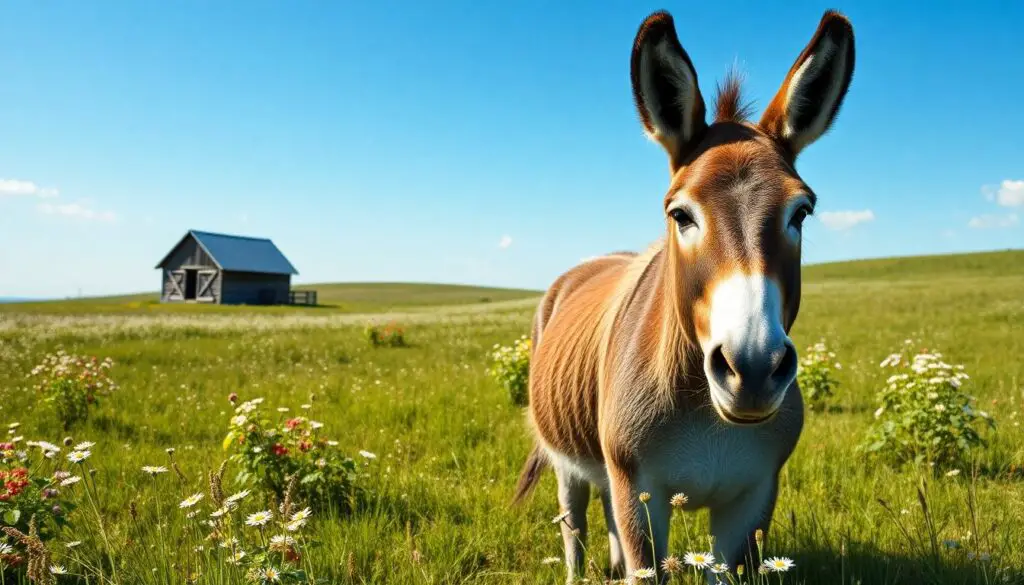Donkeys have trotted through human history carrying not just physical burdens but rich symbolic meaning across cultures worldwide. From ancient Egyptian hieroglyphs to biblical parables, these humble creatures represent far more than meets the eye. We’ll explore how donkeys embody qualities like humility, perseverance, and wisdom in various traditions.
While often overshadowed by their majestic cousin the horse, donkeys hold unique symbolic significance that deserves recognition. Their steadfast nature and unassuming presence have made them powerful metaphors in literature, art, and spiritual texts throughout the ages. Join us as we unpack the fascinating symbolism behind these remarkable animals and discover why the donkey’s cultural footprint extends far beyond the barnyard.
The Historical Significance of Donkey Symbolism
Donkey symbolism has deep historical roots spanning thousands of years across diverse civilizations. Throughout human history, these resilient animals have represented far more than mere beasts of burden, carrying profound cultural meanings that continue to resonate today.
Ancient Civilizations and Donkey Imagery
Ancient Egyptians revered donkeys, featuring them prominently in hieroglyphics and associating them with the god Set. Archaeological evidence from Egyptian tombs dating back to 3000 BCE shows donkeys buried with nobility, indicating their high status and importance in Egyptian society. Mesopotamian cultures depicted donkeys on cylinder seals and tablets, often connecting them to commerce and travel. In ancient Greece, donkeys appeared frequently in mythology, particularly in connection with Dionysus and Hephaestus, symbolizing both humility and divine wisdom. Chinese Han Dynasty art (206 BCE-220 CE) portrayed donkeys as symbols of perseverance and steadfastness, qualities highly valued in Confucian thought.
Religious Texts and Donkey References
The Bible contains over 400 references to donkeys, highlighting their cultural significance in Judeo-Christian traditions. Jesus’s entry into Jerusalem on a donkey’s back (Palm Sunday) symbolizes peace and humility rather than conquering on a warhorse. In Islamic tradition, the Prophet Muhammad’s night journey (Isra and Mi’raj) begins on Buraq, often described as a white donkey-like creature with wings. Hindu texts mention donkeys in connection with several deities, particularly as the vahana (vehicle) of Kalaratri, a form of Goddess Durga. Buddhist Jataka tales include many stories featuring donkeys as characters teaching moral lessons about patience and acceptance. Zoroastrian texts describe donkeys as creatures of good, opposing the evil spirits of Ahriman, demonstrating their spiritual significance across multiple faith traditions.
Donkey Symbolism Across World Cultures
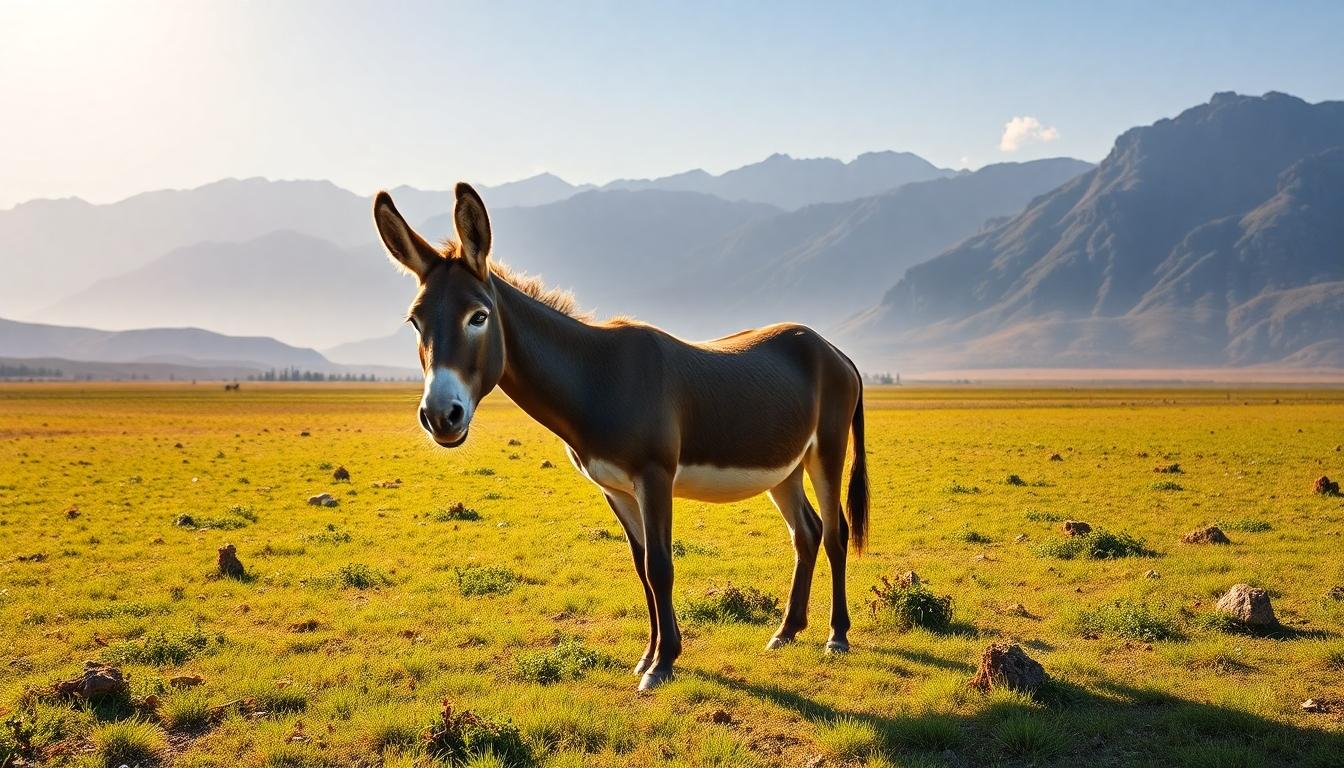
Donkeys embody rich symbolic meanings that vary significantly across different cultures and traditions. These humble animals have transcended their practical roles to become powerful cultural icons with diverse interpretations worldwide.
Eastern Traditions and Interpretations
Eastern cultures attribute unique symbolic qualities to donkeys, particularly in ancient Egyptian civilization. The Egyptians connected donkeys to their sun god Ra, elevating these animals to divine status. Their practical function as beasts of burden further established them as universal symbols of diligent labor and unwavering reliability throughout Eastern societies. Though extensive documentation of donkeys in other Eastern religious contexts remains limited, their consistent portrayal as hardworking, dependable creatures permeates cultural narratives across the region.
Western Perspectives on Donkeys
Greek mythology presents fascinating donkey symbolism, particularly connecting these animals to the god Dionysus where they represented the fascinating contrast between wildness and domestication. The tale of King Midas receiving donkey ears serves as a cautionary symbol of foolishness and poor judgment in Greek lore. Christian traditions elevate donkeys to sacred status, most prominently in the Nativity narrative where they embody profound humility and divine purpose. Throughout Biblical texts, donkeys appear as important markers of wealth, catalysts for important narratives, and powerful symbols of faithful service. Scottish heraldry further emphasizes donkeys’ patient nature, while Greek and Roman cultures valued their intuitive abilities to sense danger, transforming them into symbols of prudent decision-making. Across Western traditions, donkeys consistently represent endurance, resilience, humility, and intuition—qualities that resonated deeply with societies that relied on these remarkable animals.
Political Symbolism of Donkeys
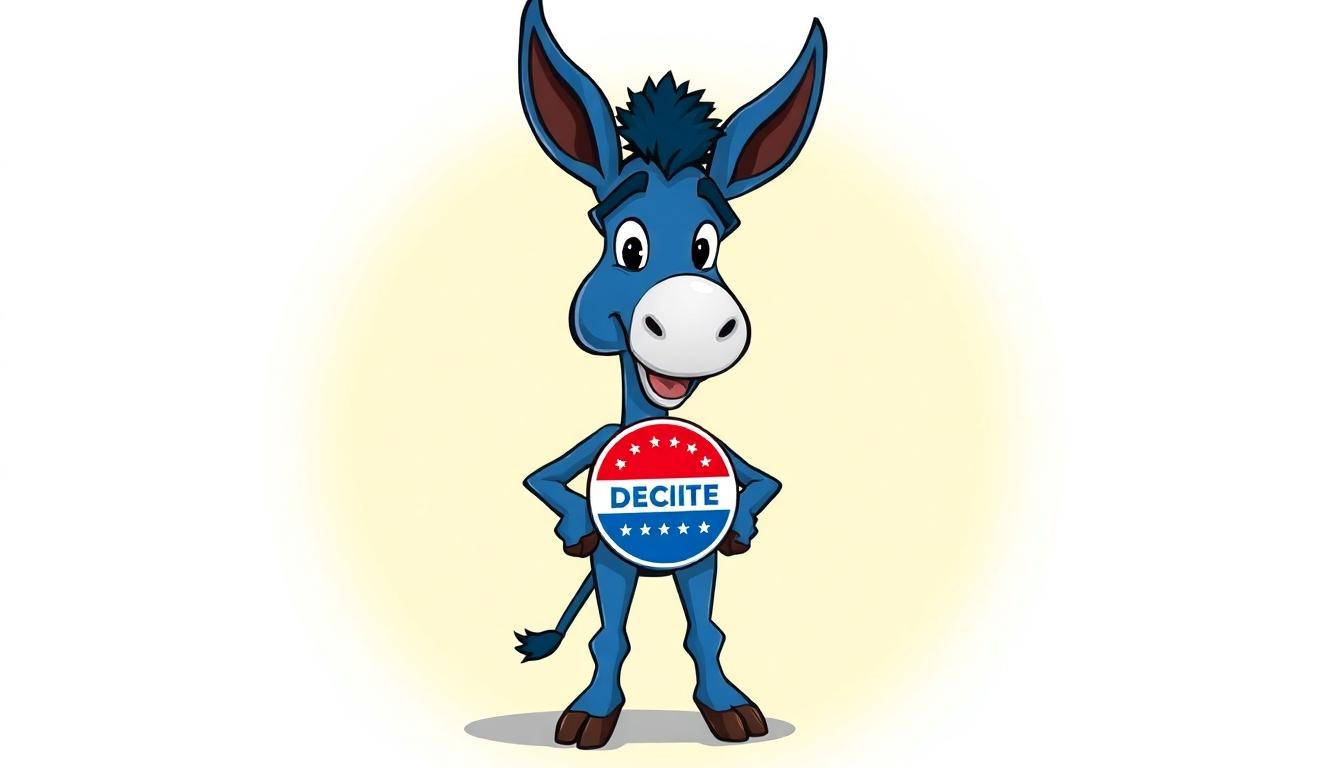
Donkeys have carved out a important place in political symbolism, most notably in American politics. Their representation extends beyond mere animal imagery to embody key political values and party identities that have persisted for nearly two centuries.
The Democratic Party’s Donkey
The donkey serves as the enduring symbol of the Democratic Party in the United States, originating during Andrew Jackson’s presidential campaign in 1828. Jackson’s political opponents first used the term “jackass” as an insult to highlight his perceived stubbornness, but rather than rejecting this characterization, Jackson and his supporters embraced it as a positive attribute representing determination and strong will. This symbolic association gained widespread recognition through the work of Thomas Nast, a prominent political cartoonist who popularized the donkey as the Democratic Party’s emblem in the late 19th century through his influential satirical illustrations. Today, the donkey appears consistently across Democratic campaign materials, symbolizing resilience and unwavering commitment to progressive principles.
International Political Representations
Unlike in the United States, donkeys rarely feature as political symbols in international contexts. While the Democratic Party’s donkey has become an iconic fixture in American political culture, similar animal representations don’t generally exist in other countries’ political systems. In some cultures, donkeys occasionally represent values like fidelity or industriousness, but these associations typically lack explicit political connections. The American political industry stands unique in its widespread adoption of animal symbolism, with the Democratic donkey and Republican elephant serving as immediately recognizable representations of the nation’s two major political parties. This distinctive aspect of American political imagery demonstrates how cultural symbols can become deeply integrated into a country’s political identity and communication.
Literary and Artistic Depictions of Donkeys
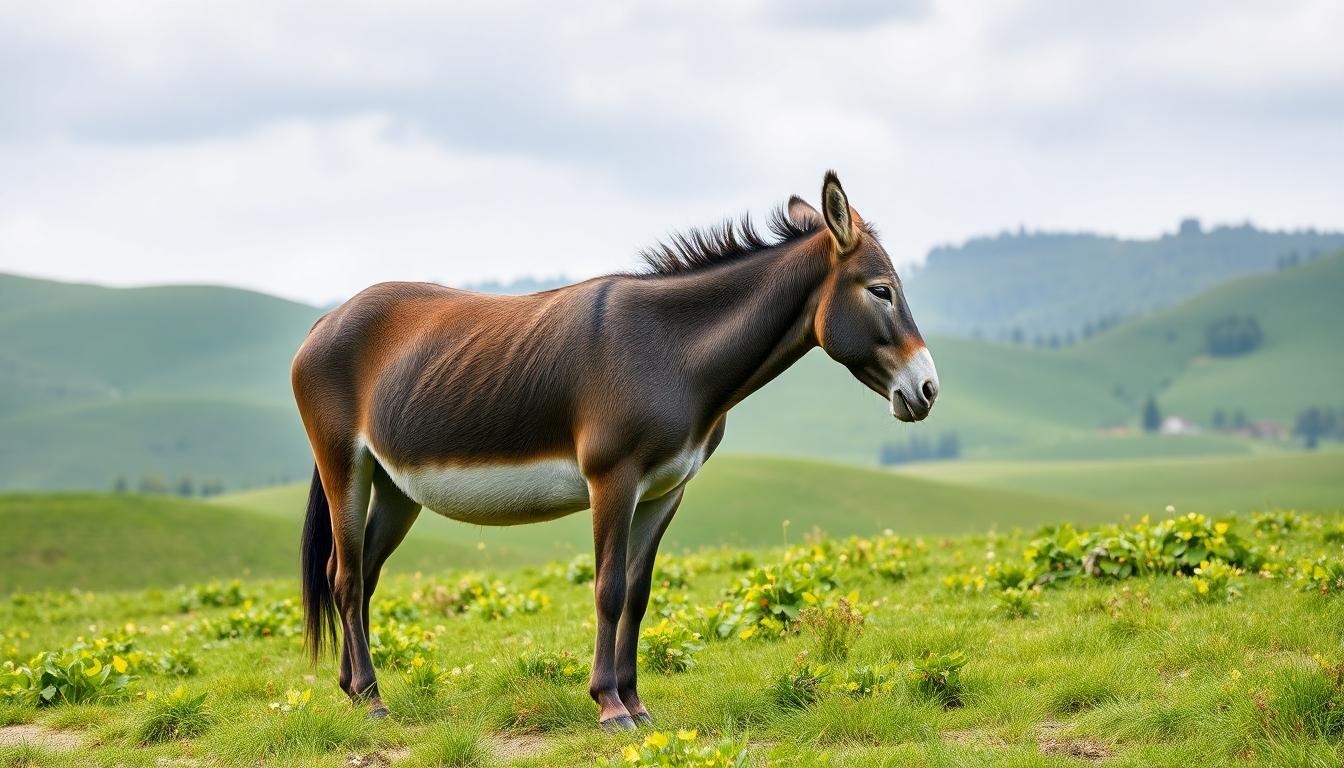
Donkeys have featured prominently in literature and art throughout history, often carrying symbolic weight that transcends their physical presence. Their representations reveal evolving cultural attitudes and demonstrate their enduring impact on human creative expression.
Donkeys in Classic Literature
Western literature frequently portrays donkeys as symbols of folly or servility. Greek and Roman authors, including Homer and Aesop, depicted these animals as stubborn or foolish, most notably in fables like “The Ass in the Lion’s Skin.” Apuleius’s “The Golden Ass” (160 AD) reinforced negative associations, connecting donkeys with lowliness and servitude while using them as effective vehicles for satire. Shakespeare continued this tradition by employing “ass” as an insult throughout his works, particularly in “A Midsummer Night’s Dream.” Cervantes offered a more dignified portrayal in “Don Quixote” (1605), where Sancho Panza’s loyal donkey reflects the animal’s practical importance in Spanish rural life rather than mere foolishness.
Visual Arts and Donkey Symbolism
Religious art elevates donkeys as symbols of humility and service, particularly in Christian depictions of the Nativity where a donkey carries Mary to Bethlehem. Ancient Egyptian artistic traditions linked donkeys to solar symbolism through their association with the sun god Ra. Greek mythology connected these animals to Dionysus, representing an intriguing duality between domesticated labor and wild, ecstatic energy. Renaissance and medieval artists frequently portrayed donkeys as emblems of patience or foolishness, reflecting their complex literary symbolism. Beyond formal artistic traditions, donkeys symbolize endurance and responsibility across cultural expressions, appearing in folklore as wise guides emphasizing caution and perseverance. Their spiritual representations highlight hard work, resilience, and humility, serving as powerful metaphors for bearing life’s burdens and contributing to societal progress through their historical roles in trade and agriculture.
Modern Interpretations of Donkey Symbolism
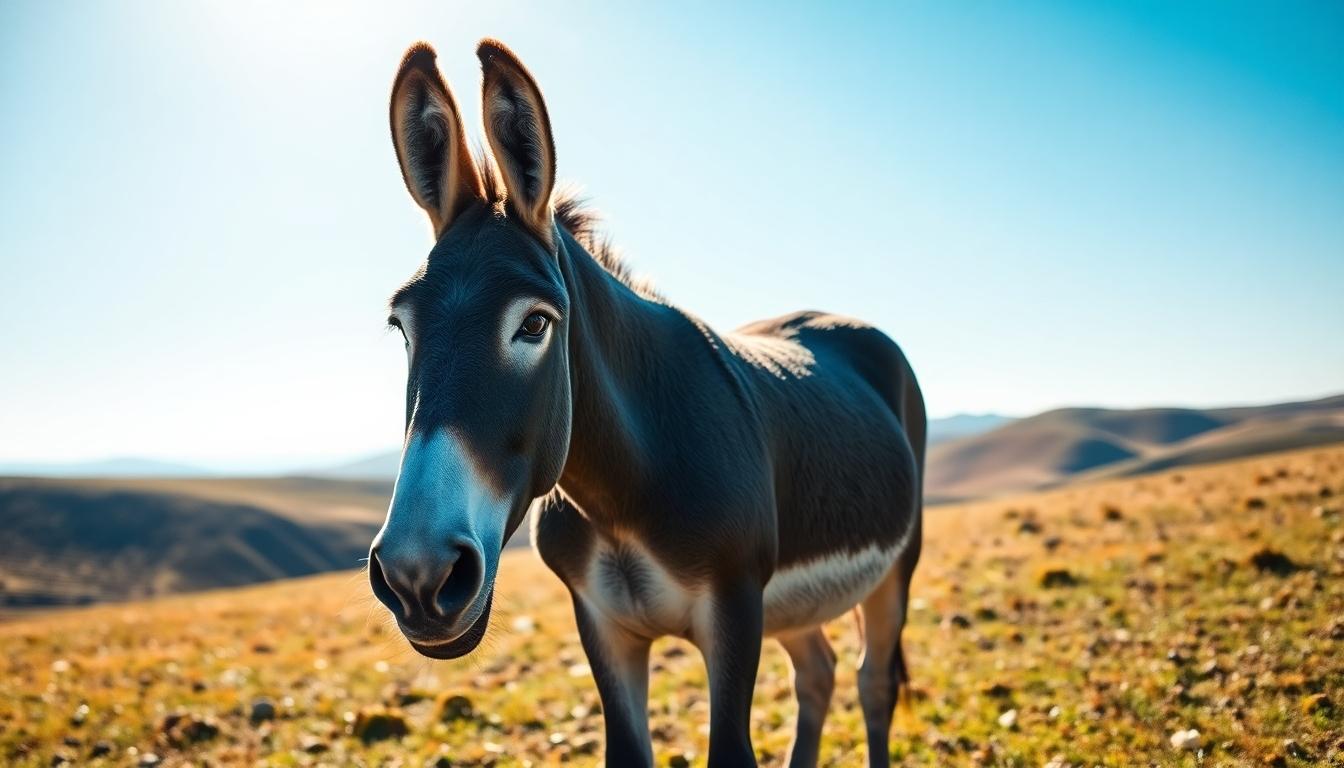
Modern interpretations of donkey symbolism have evolved significantly, emphasizing positive traits like intelligence and resilience rather than the historical focus on stubbornness or burden-bearing. These contemporary perspectives reveal how cultural understanding of animal symbolism adapts across time and contexts.
Faith, Fortitude, and Intelligence
Donkeys symbolize remarkable resilience through their ability to thrive in harsh conditions, representing qualities of faith, fortitude, and intelligence in contemporary interpretations. Their adaptability to difficult environments highlights why many cultures now view these animals as emblems of perseverance rather than mere beasts of burden. Within Christian traditions, donkeys continue to embody humility, peace, and service, particularly through the powerful imagery of Jesus entering Jerusalem on a donkey. This biblical reference establishes donkeys as symbols of peaceful intent and humble service, contrasting with horses which typically represented war and conquest.
Pop Culture References
The character Donkey from the animated film series “Shrek” stands as one of the most recognizable modern representations of donkey symbolism in popular culture. This beloved character exhibits a humorous, loyal, and surprisingly cunning personality that aligns with the natural intelligence and social nature of actual donkeys. Animation has helped transform the public perception of donkeys, highlighting their expressive qualities and charm rather than focusing on traditional negative associations. Throughout various media, donkeys have evolved from simple comic relief to complex characters with depth and relatability, reflecting a broader cultural shift in animal symbolism.
Shifting Perceptions in Contemporary Society
Contemporary society has witnessed a important transformation in donkey symbolism, moving from predominantly negative characterizations to more nuanced appreciations of their unique qualities. Historical perceptions often limited donkeys to representations of stubbornness or labor, whereas modern interpretations celebrate their intelligence, loyalty, and emotional sensitivity. In American politics, the donkey symbol for the Democratic Party exemplifies this evolution, originally introduced as a mockery but now embraced as a powerful emblem of resilience and determination. Various spiritual traditions continue to incorporate donkey symbolism, with Christianity emphasizing their connection to patience and humility, while in Hinduism they’re associated with the goddess Kalaratri. Conservation efforts worldwide have further elevated donkey symbolism, drawing attention to their ecological contributions and the ethical concerns surrounding their treatment in various industries.
Conclusion
The humble donkey transcends its physical form to become a powerful symbol across human history. From ancient Egyptian tombs to modern political logos these steadfast animals have carried the weight of our cultural narratives for millennia.
We’ve seen how donkeys represent contradictory yet complementary qualities – humility alongside dignity perseverance amid perceived stubbornness and wisdom beneath a modest exterior. Their symbolism has evolved from burden-bearers to emblems of peace intelligence and resilience.
Understanding donkey symbolism offers us more than cultural insight – it provides a mirror reflecting our own relationship with virtues like patience and service. As we continue to reexamine these remarkable creatures their symbolic legacy reminds us that true strength often comes in unexpected forms.
Frequently Asked Questions
What is the historical significance of donkeys in ancient civilizations?
Donkeys were highly revered in ancient civilizations. Egyptians associated them with the god Set and buried them alongside nobility. In Mesopotamia, they symbolized commerce and travel. Greek mythology connected donkeys with humility and divine wisdom, while Chinese Han Dynasty art portrayed them as symbols of perseverance. Their importance extended beyond physical labor into spiritual and cultural realms.
How are donkeys represented in religious texts?
Donkeys appear prominently in religious texts worldwide. In the Bible, Jesus’s entry into Jerusalem on a donkey symbolizes peace and humility. Islamic traditions portray the donkey as a creature of virtue, while Hindu, Buddhist, and Zoroastrian texts include donkeys in moral lessons. Across religions, they consistently represent humility, service, and occasionally divine wisdom.
What symbolism do donkeys carry in Eastern vs. Western traditions?
In Eastern traditions, particularly ancient Egypt, donkeys symbolized diligent labor, reliability, and were associated with the sun god Ra. Western perspectives include Greek mythology connecting donkeys to Dionysus (balancing wildness and domestication) and Christian traditions elevating them in the Nativity narrative. Generally, Eastern traditions emphasize their industriousness, while Western cultures highlight their humility and endurance.
How did the donkey become the symbol of the Democratic Party?
The donkey became the Democratic Party symbol during Andrew Jackson’s 1828 presidential campaign when opponents called him a “jackass” – a label he embraced as representing determination. Political cartoonist Thomas Nast popularized this association in the late 19th century through his influential illustrations. Unlike in America, donkeys rarely serve as political symbols in other countries.
How have donkeys been portrayed in literature and art?
In Western literature, donkeys often symbolize folly or servility in works by Homer, Aesop, and Shakespeare, though Cervantes offered a more dignified portrayal in “Don Quixote.” In visual arts, they represent humility in Christian Nativity scenes, while ancient Egyptian art connects them to solar symbolism. Across artistic expressions, donkeys consistently symbolize endurance and responsibility.
How has donkey symbolism evolved in modern times?
Modern interpretations have shifted toward emphasizing donkeys’ intelligence and resilience rather than stubbornness. Contemporary perspectives, especially in Christian traditions, highlight them as symbols of faith, fortitude, and adaptability. Popular culture, notably the character in “Shrek,” portrays donkeys as loyal and intelligent. Conservation efforts have further elevated their status, focusing on their ecological importance and ethical treatment.

